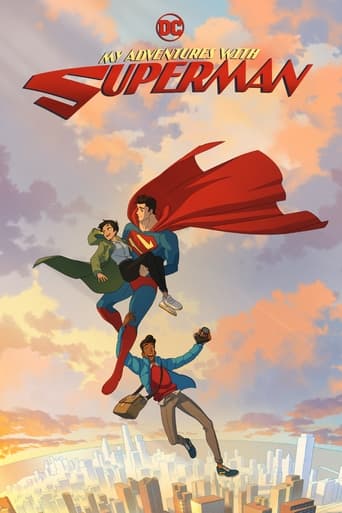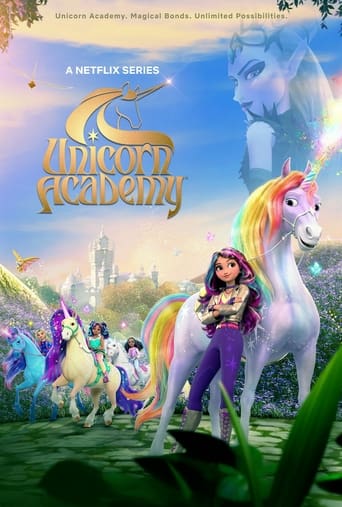Best movies like Conjuring
Before there was the stop trick, there was the magic trick
A unique, carefully handpicked, selection of the best movies like Conjuring Starring Georges Méliès, and more. If you liked Conjuring then you may also like: 20,000 Leagues Under the Sea, The Untamable Whiskers, The Conjurer, The Vanishing Lady, Whimsical Illusions and many more popular movies featured on this list. You can further filter the list even more or get a random selection from the list of similar movies, to make your selection even easier.
The film reproduces a magic act Méliès performed at his Paris theater-of-illusions, the Théâtre Robert-Houdin. Conjuring is notable as Méliès's second film, and as his first to move beyond the actuality film genre pioneered by the Lumière brothers and experiment with using the camera to capture a theatrical magic act. (Later in 1896, with his discovery of the substitution splice technique, Méliès was able to begin augmenting his theatrical illusions with new special effects unique to film.) Conjuring can thus be seen as Méliès's first foray into the world of fiction film. The film was released by Méliès's Star Film Company and numbered 2 in its catalogues.
You may filter the list of movies on this page for a more refined, personalized selection of movies.
Still not sure what to watch click the recommend buttun below to get a movie recommendation selected from all the movies on this list
The Untamable Whiskers
The background of this picture represents a scene along the beautiful river Seine in Paris. A gentleman enters, and taking a blackboard from the side of the picture, he draws on it a sketch of a novelist. Then, standing in the centre, he causes the living features of his sketch to appear in the place of his own, which is utterly devoid of whiskers. The change is made so mysteriously that the eye cannot notice it until one sees quite another person in the place of the first. Again another sketch is shown on the board, this one being that of a miser; then an English cockney; a comic character; a French policeman, and last of all, the grinning visage of Mephistopheles. It is almost impossible to give this film a more definite description; suffice it to say that it is something entirely new in motion pictures and is sure to please. (Méliès Catalog)
The Conjurer
A film from Méliès has him playing a magician who does a few tricks including making a woman disappear.
Whimsical Illusions
In this hand-colored short, a magician and his assistant do a series of magic tricks, including making potted plants appear, among others. Melies played the magician, and the actor Manuel played his assistant.
Workers Leaving the Lumière Factory
Working men and women leave through the main gate of the Lumière factory in Lyon, France. Filmed on 22 March 1895, it is often referred to as the first real motion picture ever made, although Louis Le Prince's 1888 Roundhay Garden Scene pre-dated it by seven years. Three separate versions of this film exist, which differ from one another in numerous ways. The first version features a carriage drawn by one horse, while in the second version the carriage is drawn by two horses, and there is no carriage at all in the third version. The clothing style is also different between the three versions, demonstrating the different seasons in which each was filmed. This film was made in the 35 mm format with an aspect ratio of 1.33:1, and at a speed of 16 frames per second. At that rate, the 17 meters of film length provided a duration of 46 seconds, holding a total of 800 frames.
The One-Man Band
A band-leader has arranged seven chairs for the members of his band. When he sits down in the first chair, a cymbal player appears in the same chair, then rises and sits in the next chair. As the cymbal player sits down, a drummer appears in the second chair, and then likewise moves on to the third chair. In this way, an entire band is soon formed, and is then ready to perform.
The Arrival of a Train at La Ciotat
Likely in June 1897, a group of people are standing along the platform of a railway station in La Ciotat, waiting for a train. One is seen coming, at some distance, and eventually stops at the platform. Doors of the railway-cars open and attendants help passengers off and on. Popular legend has it that, when this film was shown, the first-night audience fled the café in terror, fearing being run over by the "approaching" train. This legend has since been identified as promotional embellishment, though there is evidence to suggest that people were astounded at the capabilities of the Lumières' cinématographe.
Carmaux: Drawing Out the Coke
Carmaux is in south-central France, near the Tarn River. As a brick of coke, about four feet high and three feet wide, is gradually pushed out of a smelter into a yard, one worker sprays it with water from a hose while two workers with long metal rakes wait to spread it out. Other workers buzz in and out of the foreground of the stationary camera. Atop the first level of the brick smelter, workers push full carts of coal along a track.
The Mechanical Butcher
A butcher puts a full-grown live pig into his large box-like machine. Moments later, he draws out a full range of pork products, many already packaged for sale.
Cinderella or The Glass Slipper
Georges Méliès's first attempt at Cinderella was in 1899. That film was extraordinary then for having multiple scenes and a semblance of a narrative; additionally, the use of dissolves as transitions in it influenced other filmmakers for years to do the same. Méliès was the cinema world's preeminent leader then. By 1912, however, that was no longer the case; frankly, as evidenced by this feature, his style had become dated. Moreover, Méliès had begun to adopt techniques from other filmmakers, such as direct cuts instead of dissolves, and there's even a match on action shot during the slipper trying-on scene.
Conjurer Making Ten Hats in Sixty Seconds
A man does tricks by forming hats and then putting them on. Fragment available in flipbook format, otherwise lost.
Splice
Elsa and Clive, two young rebellious scientists, defy legal and ethical boundaries and forge ahead with a dangerous experiment: splicing together human and animal DNA to create a new organism. Named "Dren", the creature rapidly develops from a deformed female infant into a beautiful but dangerous winged human-chimera, who forges a bond with both of her creators - only to have that bond turn deadly.
Glorious Betsy
Vitaphone production reels #2471-2478; third Warner Bros. feature film - the first being The Jazz Singer and the second Tenderloin - to include talking sequences, along with the by now usual Vitaphone musical score and sound effects. A copy of this film survives at the Library of Congress in Washington, D.C., but the sound disks are lost.
The Haunted Castle
In a medieval castle, a dark magician thought to be Mephistopheles conjures up a series of bizarre creatures and events in order to torment a pair of interloping cavaliers.
Lumière and Company
40 international directors were asked to make a short film using the original Cinematographe invented by the Lumière Brothers, working under conditions similar to those of 1895. There were three rules: (1) The film could be no longer than 52 seconds, (2) no synchronized sound was permitted, and (3) no more than three takes.
The Mad Magician
Don Gallico is an inventor of stage magic effects who aspires to become a star in his own right. Just before his first performance his act is shut down by capricious manager Ross Ormond who wants Gallico's brilliant buzz saw effect for the act of The Great Rinaldi, an established star. With this defeat, and the humiliation of having already lost his wife Claire to Ormond, Gallico decides it is time to take matters into his own hands.
The Magician
In this scene is shown a magician behind an ordinary table, upon which he suddenly and mysteriously causes to appear a large box, into which he leaps. The sides of the box fall to the ground, but instead of containing the magician a lively clown steps forth who further mystifies the audience by causing the box to disappear, and in its place is seen a fully laid table with a smoking dinner, to which the clown applies himself. The table, however, suddenly disappears much to the astonishment of the clown, who is confronted by the magician in the garb of Mephistopheles. This he suddenly changes to that of a sculptor, and in the background is seen a pedestal with the bust of a young lady, which comes to life as the sculptor applies the mallet and chisel.
Partie d'écarté
Three men are sitting around a table, two of them playing a game of Écarté. When the game is over, a domestic serves drinks.
So Long at the Fair
Vicky Barton and her brother, Johnny, take a trip to the 1896 Paris Exhibition. They both sleep in seperate rooms in a hotel. When the sister gets up the next morning, she finds her brother and his room had disappeared and no one will even acknowledge that he was ever there. Now Vicky must find out what exactly happened to her brother.
The Spider and the Butterfly
Surviving fragment of a longer film. A magician makes a butterfly woman appear, and a woman in a star. Exhausted, the magician falls asleep and the star woman turns into a spider, dragging the butterfly into her web.
Tchin-Chao, the Chinese Conjurer
A Chinese conjurer stands next to a table, it becomes two tables. A fan becomes a parasol, lanterns appear and disappear. The conjurer spins the open parasol in front of himself, and a dog leaps out from behind it. The dog becomes a woman, then a masked man appears. The conjurer sits them each on a box a few feet apart: suddenly the woman and man have changed places. The disappearing and the transfers continue in front of a simple backdrop.
A Terrible Night
A man tries to get a good night's sleep, but is disturbed by a giant spider that leaps onto his bed, and a battle ensues in hilarious comic fashion.
The Lumière Brothers' First Films
A collection of short films made by the Lumiere brothers, a team of pioneering filmmakers in turn-of-the-century France, narrated by Bertrand Tavernier.
The Redeeming Sin
The Redeeming Sin (1929) is a crime drama part-talking silent film with Vitaphone music and sound effects. It was produced and distributed by Warner Bros. and stars Dolores Costello. This film is currently a lost film.
The Méliès Mystery
A documentary that details the process of restoring 270 of the 520 lost films of pioneering director Georges Méliès, all orchestrated by a Franco-American collaboration between Lobster Films, the National Film Center, and the Library of Congress.
Ariane Mnouchkine - L'aventure du Théâtre du Soleil
In this film, Catherine Vilpoux recounts Ariane Mnouchkine’s iconic artistic journey: her inspirations, her dreams for the theatre, her love of cinema, her unique and extraordinary bond with audiences. Extensive archival material – much of which has never been seen before – together with extracts from performances and rehearsals, as well as interviews and coverage of various tours and travels, reveal an in-depth portrait of the Théâtre du Soleil, and its artistic and political commitment both in France and internationally, for which it was awarded the International Ibsen Award in September 2009. Everyone who has seen one of Ariane Mnouchkine’s productions at the Théatre du Soleil in Paris leaves with the feeling of having been part of a tale of enchantment. A tale that is larger than life but at the same time reveals life.
French Heels
Returning from France after the war, John Tabor informs Palma May of her brother's death and offers the penniless girl his help, but she refuses it, preferring to work as a cabaret dancer. Later, John and Palma meet again, marry, and go west to manage a lumber camp, as instructed by John's wealthy father, Jarvis Tabor. Displeased by John's choice of wife, the elder Tabor tests the couple with difficult living conditions, which eventually discourage Palma, and she accepts the party invitation of Keith Merwyn, manager of the cabaret where she starred. Meanwhile, Merwyn effects a disturbance among the lumbermen, endangering John.
The Photon Effect
During a freak accident involving an experimental microwave antenna, two tower engineers gain superhuman abilities. While the powers they gain are similiar, the paths they decide to take are not. Derek Powers wants to use his abilities to help others and to uncover the truth behind Randall Communications Incorporated (RCI), the company who designed the antenna. Meanwhile, Jay Powers secretly becomes part of the experiments performed by RCI, whose lead scientist, Tina Viccarini, is a former love interest of Jay. This series of events ultimately leads to the birth of a new superhero and supervillian.
La Jetée
A man is sent back and forth and in and out of time in an experiment that attempts to unravel the fate and the solution to the problems of a post-apocalyptic world during the aftermath of WW3. The experiment results in him getting caught up in a perpetual reminiscence of past events that are recreated on an airport’s viewing pier.
Andrus: The Man, the Mind & the Magic
To some of the greatest performing magicians alive today, Jerry Andrus is the name of a legend. Renowned as one of the best and most influential "close-up magic" performers of our time, Jerry is equally regarded among scientists, educators and skeptics as a visionary, poet, philosopher, inventor and creator of truly astounding optical illusions. Andrus; The Man, the Mind & the Magic is the story of a modern day Da Vinci told by the man himself, along with extensive interviews from some of the notable thinkers, artists and magicians in the world today.
Point Blank - The Documentary
Diving into the making of this iconic film directed by John Boorman and starring Lee Marvin. Delve into Marvin's war experiences shaping his intense performances, Boorman's transition from BBC director to cinematic innovator, and the unique adaptation of Donald E. Westlake's novel. Discover the creative synergy between Marvin and Boorman, leading to groundbreaking narrative structures, thematic color use, and cinematic techniques. Witness the film's evolution from mixed initial reviews to a cult classic, influencing the crime genre and showcasing the power of collaboration in filmmaking.















































20,000 Leagues Under the Sea
The film, a parody of the novel Twenty Thousand Leagues Under the Sea by Jules Verne, follows a fisherman, Yves, who dreams of traveling by submarine to the bottom of the ocean, where he encounters both realistic and fanciful sea creatures, including a chorus of naiads played by dancers from the Théâtre du Châtelet. Méliès's design for the film includes cut-out sea animals patterned after Alphonse de Neuville's illustrations for Verne's novel.